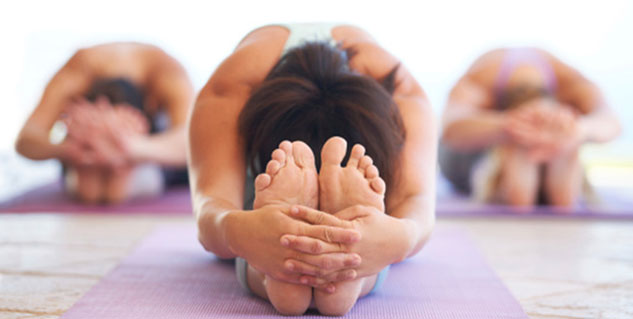The sciatic nerves are the body’s two principal nerves. They are thick as your pinky finger and originate from the lower lumbar spine. They go through the buttocks, down the back of each leg ending at the soles of the feet and big toes.

Pan strikes when a root that helps from one of the sciatica nerves or when the nerve fibers become irritated. One can experience it anywhere all along the nerve’s branch that is lower back, buttocks, leg, calf or foot. One can feel it either at one leg or both of them.
Sciatic pain is like snowflakes. No two pains are ever the same.
The pain can be felt like dull soreness, lack of sensation or more like an electric shock or excruciating stabbing pain. At an outset this ache can make one uncomfortable to sit, walk or stand.
An episode of pain can survive anywhere from a small number of hours to more than a few weeks. Some are common and regular; on the other hand others may attack you out of the blue.
Here are the yoga Asanas for Sciatica Treatment.
Uttiha trikonasana
It can also known be as extended triangle pose:
Top Stories
- Stand comfortably and erect with your feet four feet apart.
- Turn your right foot at an angle of 90 degrees and the big toe of your left foot is pointing slightly inwards.
- Rotate your torso and while bending, touch the finger of your right hand near the right foot.
- Hold for 30 seconds and repeat 3 times on each side.
Supta Padangusthasana (Variation 1)
It can also be known as reclining Hand-to-Big-Toe Pose.
Method
- Lie flat on your back near a wall.
- Lift your right leg and relax it along or next to a door and place it next to the door frame to support it.
- The left leg must be stretched out.
- However if you experience any kind of pain, turn the raised leg outwards.
- The support of the door frame helps you to relax while the legs and pelvis are trained for proper alignment.
- Hold the pose for 30 seconds. Repeat twice on each side.
Supta Padangusthasana (Variation 2)
Method
- Lie on your back and keep a chair near you in line with your waist, around 2 feet away.
- Lift your right leg and place it gently on the edge of the chair making sure to keep your hips level.
- The support of the chair helps you to relax while the legs and pelvis are trained for proper alignment.
- Hold the pose for 30 seconds. Repeat twice on each side.
Standing twist
The standing twist is a milder standing version of the stretch in ardha matsyendrasana. Place a chair against the wall. To stretch your right hip, stand with your right side next to the wall. Place your right foot on the chair, with your knee bent to roughly 90 degrees. Keep your standing leg straight, and steady your balance by placing your right hand on the wall. Lift your left heel up high, coming onto the mounds of the toes, and turn your body toward the wall, using your hands for balance. As you exhale, lower your left heel to the floor, maintaining the twist. Allow your right hip to descend, keeping your hips relatively level. Hold for several breaths.
Modified goukhasana
Gomukhasana (cow's face pose) is a good example of a passive stretch to the hip rotators. Sit on the floor and extend your legs forward in dandasana (staff pose). If you have trouble sitting upright, you can sit on the edge of a blanket, but also keep a second blanket or a towel nearby. Bend your right knee and bring your right leg over and across your left leg.
Use your hand to draw your right foot close to your outer left hip. Move your left foot across the midline to the right. Using your hands on the floor, lift and wiggle your hips until your knees are stacked, with your right knee above your left.
If you are sitting on a blanket, or the back of your left leg is not touching the floor, or your left knee locks or hurts during the stretch, roll up your second blanket or the towel and place it under your left knee. Hold your right foot in place with your left hand. As you breathe in, lift and lengthen through your spine to the crown of your head; as you exhale, fold forward at the hip crease, bringing your chest toward your knee, keeping your neck relaxed. Move as if you bring your navel toward your knee and keep your spine extended.
Image source: Shutterstock
